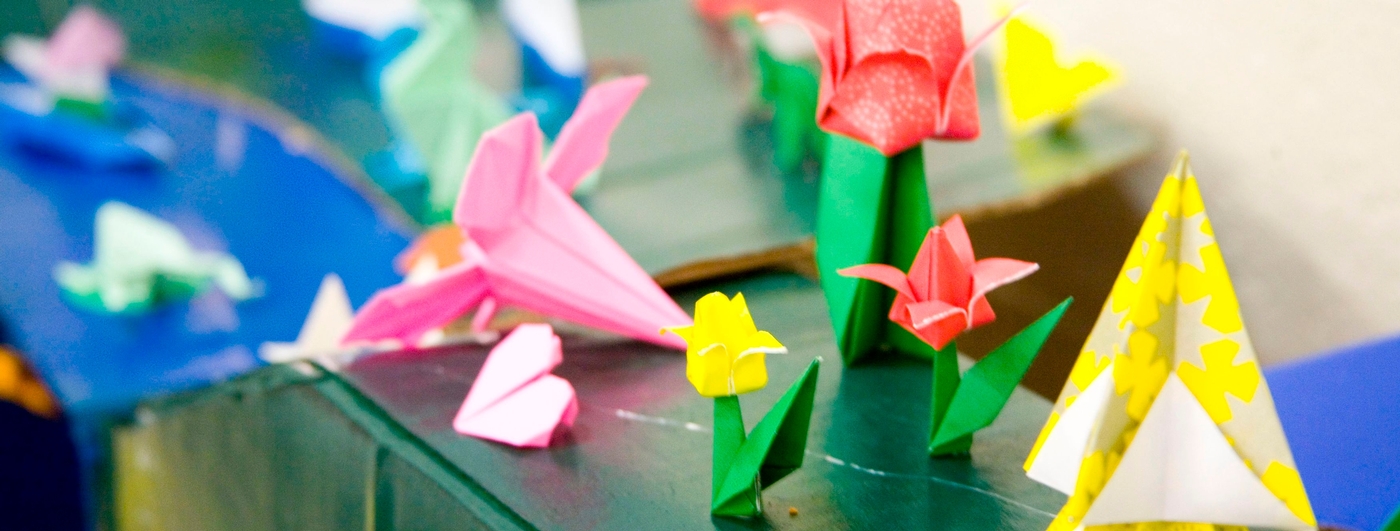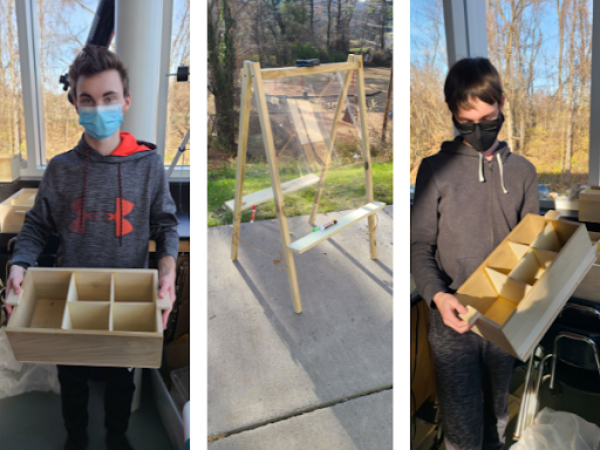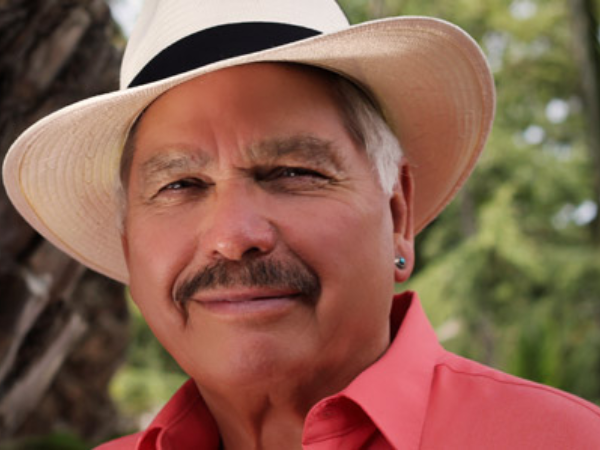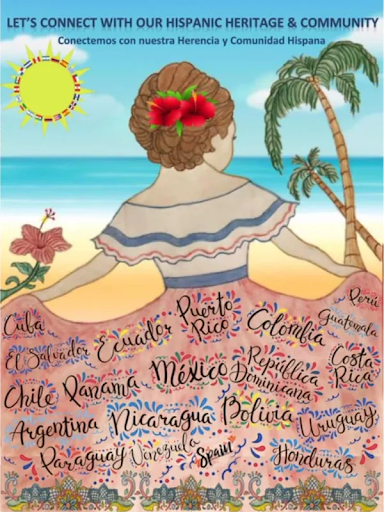Empowering students with language-based learning differences

Siena Blog



The Siena School Blog
Discover, Learn, Celebrate, and Empower
Welcome to Siena's blog, your source for helpful, cutting-edge resources tailored to teachers, parents, and other advocates in the learning differences community. We are dedicated to providing a wealth of curated knowledge spanning various topics, ranging from dyslexia advocacy and awareness to classroom teaching strategies, heritage month profiles, and social and emotional health.
Authentic Assessments and Project-Based Learning at Siena

What Is Authentic Assessment and Project-Based Learning?
With schools starting up, teachers might be looking to use new measures of student learning that are engaging and meaningful. Accurate assessment methods are especially important for students with dyslexia: they typically do better with multi-step projects that involve ample communication, collaboration, and creativity and that aren’t writing-centric.
Such project-based student learning overlaps with authentic assessment, a term coined in the 1980s by the late educational researcher Grant Wiggins. Wiggins insisted that an authentic task should be worth redoing—not just for rote memorization or a better grade, but for a better understanding. Authentic assessments typically involve four key areas:
- Engagement
- Meaningful Feedback
- Diverse Learning Objectives
- Interdisciplinarity
Project-based learning is increasingly common in K-12 schools for teachers as a way for “students [to] learn content and skills while working collaboratively, thinking critically and often revising their work” over multiple weeks, as this U.S. News & World Report article notes. This approach connects students to the tasks and challenges they might eventually see in Humanities, STEM, and other fields.
Authentic Assessment and Project-Based Learning at Siena
As Siena’s Director of Technology Simon Kanter notes, “We’re always assessing a variety of skills, not just content knowledge, in our classes.” While students write some content for their summative projects, writing isn’t the centerpiece of such work. This approach is especially effective for our students because it both allows them to showcase their skills in ways that make the most sense to them and plays to their many strengths.
Here are some examples of authentic assessments at Siena:
- When discussing energy in middle school science, Jennifer Chambers presents her students with a real-world challenge to design, build, and test a roller coaster that works using a minimal amount of fossil fuel energy. After weeks of testing and collaborating, students then pitch their project to an imaginary CEO.
- Kristian Whipple’s high school visual arts students take the school photos each year on Picture Day, fitting their class work and photographic talents directly into the real-world production of our yearbook photos and other visual content.
- Nick Franson’s high school engineering students recently made outdoor easels and organizer boxes for a local nature preschool as a way to apply their knowledge of woodworking and engineering techniques and to provide a usable product. Franson’s students have also made set pieces for Siena’s theater department performances as part of the engineering curriculum.
Last school year, Middle School Dean of Students and Director of Student Life Megan Noyes had students create an amusement park based on their study of ancient civilizations in her social studies classes. Noyes assessed students on their content knowledge and ability to connect each attraction to ancient history, their presentation, and their creativity. Students used their artistic skills, science and reasoning skills, and writing skills to put together engaging, multisensory presentations.
After completing the project, they presented their amusement park to the class as if they were in a commercial. Some of the attractions included a ride called Artemis’s Aim where riders would shoot a bow and arrow at targets, Bath House Bistro where people ate in a jacuzzi like they were in a Roman bath house, and a ride called Fertile Crescent Water fight where riders have a water gun fight with the water from the banks of the Tigris and Euphrates rivers. Students also designed maps of their parks’ attractions. Students demonstrated their depth of knowledge about ancient civilizations throughout their presentations.
For Noyes, “This project was a great way for students to demonstrate the overall knowledge of ancient history that they learned over the year, apply it by using higher-order thinking to connect it to a real world theme, and get to have fun as well.”
Resources for Authentic Assessment and Project-Based Learning
Across all divisions, Siena teachers design their projects to enable students to do what they’ve always been doing in a class, while also showcasing their strong analytical and creative skills. Siena’s Simon Kanter sums it up: “Since we’re strongly student-centered, we enable the students to learn and be assessed in the ways that work best for them. We value assessments that are engaging to our students and more meaningful to everyone involved, as well as those that match our multisensory teaching methods.”
See here for some additional materials and resources for authentic assessment:
- Edutopia has several pieces on authentic assessments and project-based learning;
- Boston University’s Project-Based Learning: Teaching Guide and Ask a Tech Teacher’s 7 Authentic Assessment Tools have numerous ideas for teachers; and,
- Indiana University Bloomington has a helpful overview of authentic assessment in its teacher resources, including a grid distinguishing typical tasks, authentic tasks, and indicators of authenticity.
The Siena School blog has ample material about Siena’s teaching methods and learning objectives, including multisensory math in our classrooms and dyslexia advocacy and accommodations for our students.
The Siena School proudly serves students with dyslexia and other language-based learning differences in grades 3-12 on campuses in Silver Spring, Maryland, and Oakton, Virginia.
Spotlight on Victor Villaseñor

“I wanted my children to see examples of real Mexican heroes, since I grew up thinking Mexicans could only wash dishes and work in the fields.” —Victor Villaseñor, on his book Rain of Gold
National Hispanic Heritage Month 2022
As part of National Hispanic Heritage Month this year, Siena is honoring Victor Villaseñor for his decades of successful work as a writer, speaker, and activist with dyslexia.
The National Council of Hispanic Employment Program Managers (NCHEPM) chose Unidos: Inclusivity for a Stronger Nation as the theme for National Hispanic Heritage Month 2022. Since 1988, National Hispanic Heritage Month has spanned September 15–October 15 each year. The September 15 start date coincides with the independence day anniversaries for several Latin American countries, including Chile, Honduras, Mexico, and Costa Rica.

A Latin Writer with Dyslexia
Born in Carlsbad, California, in 1940, Villaseñor has been a prolific author of fiction, nonfiction, and children’s works since publishing his first books, Macho! and Rain of Gold, in 1991.
Perhaps unusually, Villaseñor was an avid reader and writer well into adulthood before he realized he’s dyslexic.
Villaseñor was diagnosed with dyslexia in his mid-40s, when his sons were also being tested. As he remembers his conversation with the learning specialist who diagnosed his sons and him,
“Do you see rivers between the words?” she asked.
“All the time,” I said. “I look at a page and I have to take a big breath to stop the rivers from coming down the page between the words from the left up high to the right down low. And you mean other people don’t see these rivers moving on the page?”
She shook her head, “No, they don’t. Oh, I’ve never had someone so far off the charts. It’s incredible, it’s a miracle that you ever learned to speak or read. And to write, to become a professional writer, is beyond my comprehension. How did you do it?”
I couldn’t talk anymore. Finally somebody understood what I’d gone through to become a writer.
Since then, Villaseñor has published numerous other books, including the memoirs Burro Genius and Crazy Loco Love and Mexican folktales for children such as The Stranger and the Red Rooster and Goodnight, Papito Dios. (See here for his bibliography.)
In addition to his prolific writing and public speaking, Villaseñor has also done a lot of advocacy and community building through such efforts as Snow Goose Global Thanksgiving, an annual music festival with shared food that takes place on the Sunday before Thanksgiving. Villaseñor also runs workshops for teacher training, Indigenous history, and biographical/autobiographical writing.
For more information about Villaseñor, see these videos on his website, as well as this profile from the Yale Center for Dyslexia & Creativity.
What makes me a special kind of author and public speaker is that I didn’t learn how to read until the age of 20. And because of that, I didn’t get educated into Western civilization and so I was able to retain my grandmother’s Indigenous Native American Sacred Knowledge. —Victor Villaseñor
National Hispanic Heritage Month Resources
There are ample online resources to learn more about National Hispanic Heritage Month and upcoming events and exhibitions commemorating it:
- Learn more here about National Hispanic Heritage Month from the Library of Congress and the National Endowment for the Humanities. The website includes resources for teachers and information about past and present exhibits of interest.
- See the United States Census Bureau’s overview of National Hispanic Heritage Month.
- Visit the National Archives website for a wealth of information about National Hispanic Heritage Month, including video resources, online exhibits, and digitized materials from Presidential Libraries.
- While the National Museum of the American Latino is still under construction, visit their website to learn more and watch a video message from Museum Director Jorge Zamanillo. In the meantime, the Molina Family Gallery at the National Museum of American History is open to the public and features multimedia storytelling and physical relics. Take a virtual tour here.
Resources from Siena’s Blog
Learn about Siena’s commitments and ongoing initiatives for Diversity, Equity, Inclusion, and Belonging. And, see Siena’s blog for related material from earlier this year, including spotlights on filmmaker Ann Hu from AAPI Heritage Month, poet Amanda Gorman from Black History Month, and Olympian and activist Meryl Davis from Women’s History Month.
The Siena School proudly serves students with dyslexia and other language-based learning differences in grades 3-12 on campuses in Silver Spring, Maryland, and Oakton, Virginia.
“The beginning of all wisdom is to understand that you don't know. To know is the enemy of all learning. To be sure is the enemy of wisdom.” —Victor Villaseñor, Burro Genius

